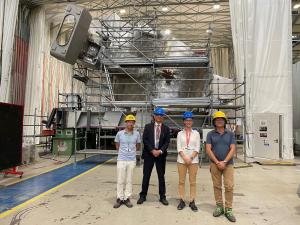AI shows promise in unique European trial
Artificial intelligence performs well in predicting weld defects during a novel trial designed by the European Domestic Agency (Fusion for Energy) vacuum vessel team.
The vacuum vessel team in Europe charged with the procurement of five sectors of the ITER vacuum vessel has been working for two years to explore the benefits of using artificial intelligence (AI) in nuclear engineering, with the full support of Fusion for Energy and its governance.
As reported in a recent article on Fusion for Energy's website, Senior Technical Officer María Ortiz de Zúñiga and Cristian Casanova, Vacuum Vessel Programme Manager at the time, conducted a pilot study using data previously collected from vacuum vessel welds with defects to train an AI model to predict which welds in progress would present defects.
"Big Science projects like ITER offer a wealth of data which is ideal for AI. They provide us with a one-of-a-kind opportunity to learn, train, extrapolate and apply these skills in other fields of manufacturing. There are very few attempts in bringing AI in nuclear engineering, so we decided to give it a try and break new ground. We are the first ITER party to test the waters and since this pilot project, there has been an unprecedented interest and enthusiasm harnessing its potential," explains María Ortiz de Zúñiga.
The results were conclusive. After data collected from 2,000 electron beam welds was entered into the model, it predicted with 100% accuracy how many of the 100 welds in progress would pass or fail conformity checks. Similarly, the model was able to predict the results of PAUT testing (phased array ultrasonic testing) with 96% accuracy.
Read the full article on the Fusion for Energy website here.


